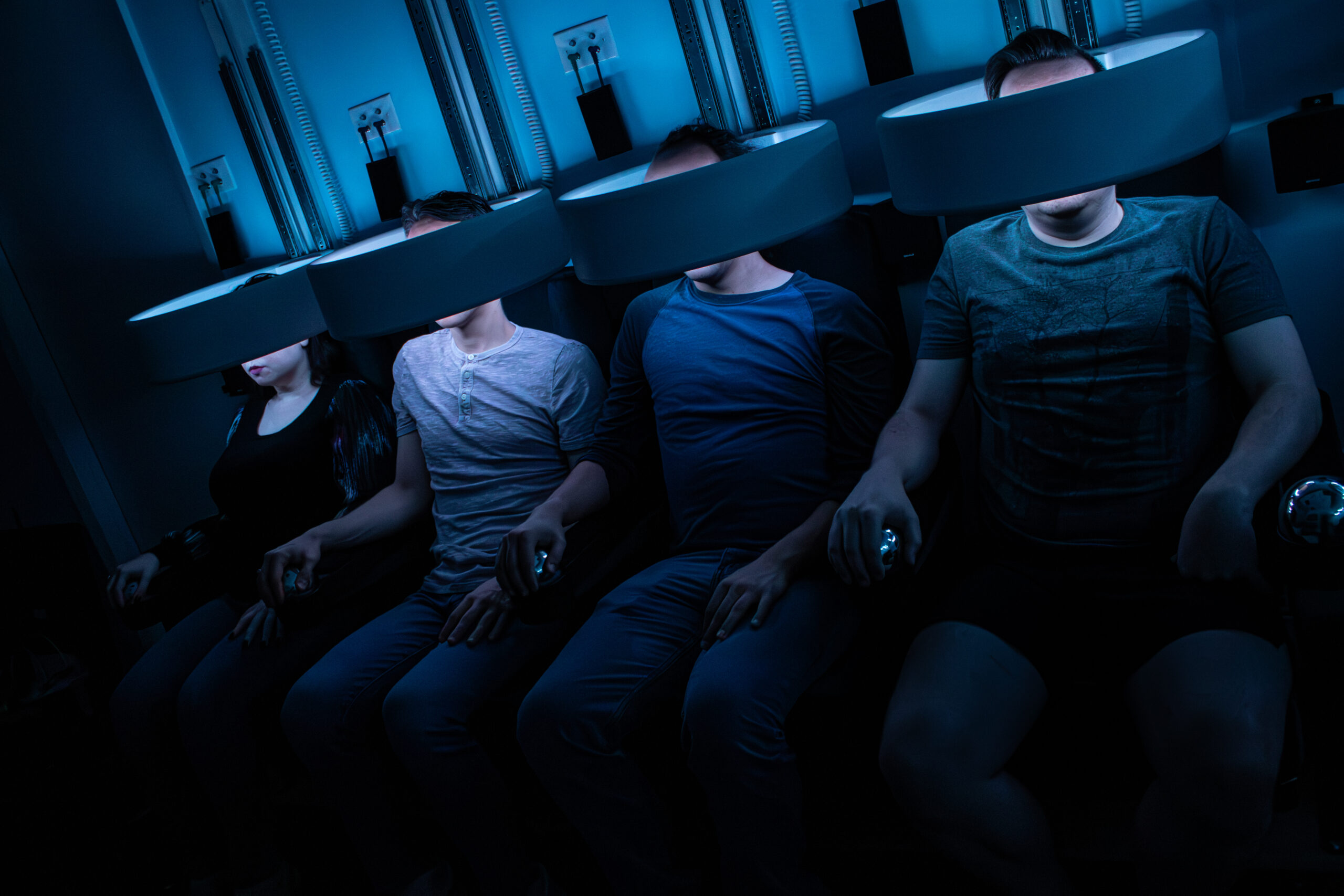In the past couple of years, I’ve been honored to have a few creators invite me to join their creative process. Whether the relationship is ongoing or a single meeting, as a consultant, I always start with one request…
Show me your player journey.

WHAT’S THE PLAYER JOURNEY?
Think of it as a written outline of your experience. It walks through the show beat by beat, notably from the player’s perspective. Write down what happens, but strictly through the guest’s eyes.
This allows you to focus on what the players experience and when, and nothing more. It’ll show you what’s irrelevant, and what really matters. It will challenge you to consider onboarding and offboarding, when the crossover to the Magic Circle happens, what facts players learn, when they receive a goal, what twists happen when, how they achieve their goals, and how the whole comes to a fulfilling end.
The X factor of the immersive industry is the invitation for the audience to become players. To make the most of that X factor, we should consider first and foremost what the player is experiencing.
When Strange Bird Immersive is in the early stages of developing show ideas, each pitch takes the form of a two-page player journey. It sketches out the main story beats and sets, often defaulting to “insert plot-driven puzzling here”—the details do not matter as much as the whole. The competing outlines allow us to quickly identify what stories seem most exciting and what stories feel too boring or too complicated.

When I’m invited into a project, the player journey quickly communicates to me your vision for the production. I get excited. I can see it happening! It will also reveal what decisions still need to be made and if there are any structural problems that need solutions. I have the context to see what’s working and what’s not.
WHAT’S NOT THE PLAYER JOURNEY?
When I’m consulting, creators sometimes want to share with me a lot of information. They’re excited about all they have developed. But details aren’t where you start. Details need context. And most details end up as “nice to know.” The first meetings should be dedicated to “need to know.”
Essentially, you can’t pitch a concept from the writer’s POV.

Skip the lore, at least for the first meeting. Instead, show me how you’ll get players to care enough to engage in the world in the first place. Only when they care, will the details mean anything at all.
HOW TO WRITE
Think of it like a short story. I prefer to use sentences instead of bullet points. It makes for a more exciting read.
Keep it short. Unless you’re outlining a multi-day experience, you shouldn’t need more than a few pages. Each sentence can be a beat.
If the project is in the early stages, don’t get bogged down by the details. A sketch will suffice. Feel free to write “…and then they work on some compelling plot-driven engagement/puzzles for a while.”
I write my own player journeys in a third person limited voice (I only describe what they see/hear/touch at that moment). Third person omniscient would not be useful here, so avoid that. If you’d like to give it more immediacy, you could write in second person “you.”
Remember that the player journey is for internal use only, so no need to make it a perfect piece of writing.
SAMPLE PLAYER JOURNEY
Once the players have booked the escape game Lucidity, they receive communication from Dr. Riley Newmark thanking them for volunteering for her experimental study in lucid dreaming.
Players arrive in an office lobby all in black and white that, when they look more closely, is by no means normal. Dr. Newmark enters in a lab coat to greet them, directing them to restrooms. She is spooked by a statue in the lobby, it’s apparently a new installation.
When everyone is ready, she leads the team to her lab: a small blue room outfitted with a desk, computers, cabinets, and a bank of seats with large halos hovering overhead. She invites them to sit. “Not to worry, the halos are not active yet…“

WHAT IF MY PROJECT IS ALREADY LAUNCHED?
As a writing tutor in college, I encouraged writers to do what I called “a reverse outline.” Look at the draft you just wrote and create from it an outline. If you find a paragraph that doesn’t say something new or doesn’t rhetorically follow from what came before, congratulations! You just identified a problem you can fix!
The same goes for a show that’s already running. Write down what players or guests experience beat by beat. Is the onboarding too long? Does the offboarding feel inadequate? Can you identify the moment players are given a reason to care?
An outline can show holes in your Magic Circle or places to optimize the flow. Getting that sweet sense of flow is what immersion is all about.
WAIT. YOU CONSULT?
For a blog reader? Absolutely! While I remain primarily dedicated to the Strange Bird brand, I relish the opportunity to explore other approaches in this medium I love best, and the chance to collaborate with a fellow creative is a both a privilege and a profound joy.
Let’s chat at Recon LA this weekend, or reach out to me via email. I would love to hear about your player journey.
Discover more from Immersology
Subscribe to get the latest posts sent to your email.



You must be logged in to post a comment.